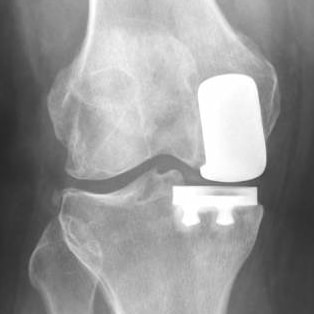In many cases, arthritis damage can be seen throughout the knee. For some patients, however, arthritis damage is only limited to one part, or compartment, of the knee. For these patients, partial knee replacement surgery may be an option.
The knee is divided into three sections called compartments. The inner portion of the knee is called the medial compartment, the outer portion is called the lateral compartment, and the front of the knee is called the patellofemoral compartment. If a patient’s arthritis damage is limited to only one of these compartments, that patient may be a candidate for partial knee replacement.
Difference Between Partial And Total Knee Replacements
During a total knee replacement, the entire joint surface is replaced with prosthetic components. With a partial knee replacement, only the damaged portion of the knee is resurfaced with implants. The healthy bone and cartilage is left alone.
When compared to total knee replacements, partial knee replacements generally allow for less blood loss, less pain after surgery, and quicker recovery times. Many patients also report that a partial knee replacement feels more like a natural knee because the healthy part of the joint is left alone. However, if arthritis damages the other compartments of the knee in the future, a total knee replacement may eventually be necessary.
Who Are Potential Candidates?
Candidates for any joint replacement surgery will generally have advanced arthritis or an injury that does not respond to nonsurgical treatment. Pain and stiffness may be so bad that it interferes with everyday activities.
Arthritis damage must be limited to only one compartment of the knee for a patient to be eligible for a partial knee replacement. Patients with inflammatory arthritis like rheumatoid arthritis may not be good candidates for this procedure. Partial knee replacements also may not be recommended for patients with ligament damage or severe stiffness in the knee. In these cases, a total knee replacement may be recommended instead.
Partial Knee Replacement Procedure
Before Dr. Meneghini begins a partial knee replacement, he will explore the other compartments of the knee to confirm that the damage is limited to just one compartment. He uses special instruments to remove the damaged cartilage from the compartment of the knee that needs to be replaced.
After the cartilage is removed from the damaged compartment, the ends of the bone are resurfaced with metal components. A plastic spacer is inserted between the two components to allow the newly-resurfaced compartment to glide smoothly.
Recovery And Outcome
Partial knee replacements may require a period of hospitalization, but the hospital stay is often shorter than total knee replacement and most patients return home the same day. The procedure often requires a smaller incision and is less invasive than a total knee replacement. Patients usually have less pain and swelling in the knee after surgery, and for that reason may have an easier rehabilitation period.
As with a total knee replacement, physical therapy is critical to the success of a partial knee replacement. You will begin working with a physical therapist soon after surgery to begin moving your knee. You may need to use an assistive device like a walker, cane, or crutches to get around for the first few days or weeks, but most patients are able to resume normal activities within 6 weeks of surgery. In the right candidates, partial knee replacements can be very successful and perform very well.
Partial Knee Replacement In Terre Haute And Fort Wayne, IN And Surrounding Communities
Dr. Meneghini strives to provide quality care to his patients, using the most advanced surgical techniques available. Dr. Meneghini recommends surgical options based on a thorough examination. If you would like to schedule an evaluation with Dr. Meneghini to determine whether you are a candidate for partial knee replacement, please call our office at (317) 620-0232.

Specialties
